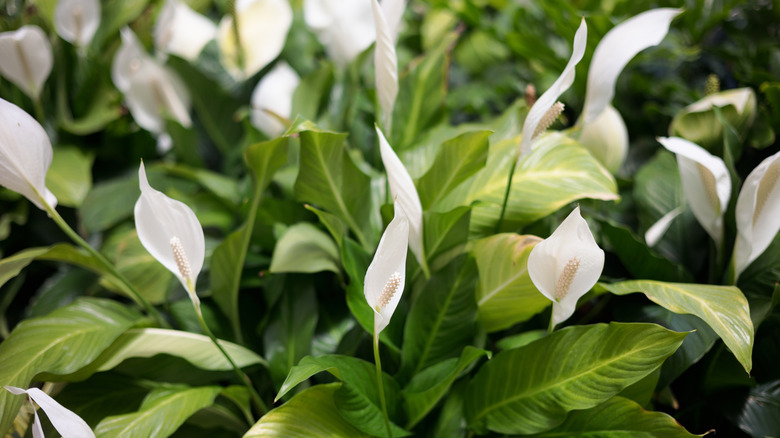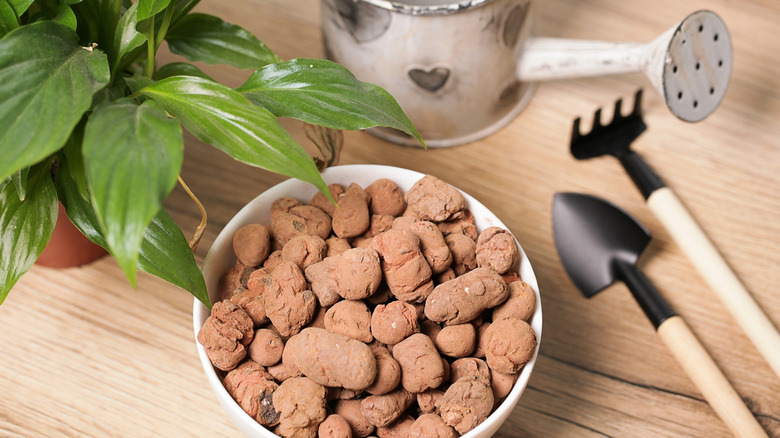Help Your Peace Lily Plants Flourish With A Little-Known Gravel Trick
Peace lily (Spathiphyllum x) is a member of the philodendron family of plants. Although there are over 35 varieties of peace lilies, there are some varieties of peace lilies that are commonly grown indoors. It's a popular houseplant that is notorious for its low light needs, and this is why you'll often find the plant in offices and other settings with low light. They grow well and even bloom in conditions where other houseplants wouldn't survive. In fact, they are so easy to grow that they are often killed with kindness; that is, too much light, which burns the leaves and dehydrates the plant overall. Even too much watering from a conscientious gardener who believes that more attention is better, may find their peace lily doesn't thrive under such attention. As confusing as this may sound, growing peace lilies in perfect conditions calls for an unusual addition: gravel.
When growing peace lilies, there are some mistakes to avoid. As mentioned, place your lily out of direct sunlight. Too much fertilizer, which burns the leaves and roots, is also not recommended. If needed, a general-purpose fertilizer of 20-20-20 is best. These lilies like to be pot-bound, but when their roots start to grow through the bottom of their original pot, it's time to size up. Choose a pot that is 1 to 2 inches larger, and use a rich potting soil mix. Avoid too large a container as the potting soil may remain moist too long, leading to root rot. As for that whole gravel addition — we'll dive into that next.
Growing peace lilies in perfect conditions with gravel
Although sensitive about too much water, peace lilies do require higher humidity than is normally found in homes. Many indoor spaces are too dry for the plant's optimal health. During the warm months, air conditioners provide cool, dry air, and in the winter months, heaters provide warm, dry air. The optimal humidity for humans is 30% to 50%, while houseplant needs vary; their optimal humidity is typically higher, with peace lilies clocking in at above 50%. Adding a humidifier can improve things, but often this is impractical or inefficient for all areas of the home or office. Thankfully, there are ways to increase the humidity in your home so your plants can thrive. In the case of peace lilies, create a humidity tray, using a waterproof shallow container and gravel.
To create a humidity tray, choose a container that is slightly larger than your plant pot for a single lily, or even a larger tray that will accommodate multiple pots. Fill the container with a layer of gravel. Place the plant pot or pots directly on the gravel. Add water to the gravel tray until it reaches just below the depth of the gravel, making sure it's not high enough that it reaches the bottom of the pot containing the lilies. If the roots are sitting in water, they will rot. Now you are creating a higher humidity environment without overwatering the plant. Keep the water level in the gravel tray at just below the level of gravel no matter what your plant watering schedule is, and watch your lilies flourish.

